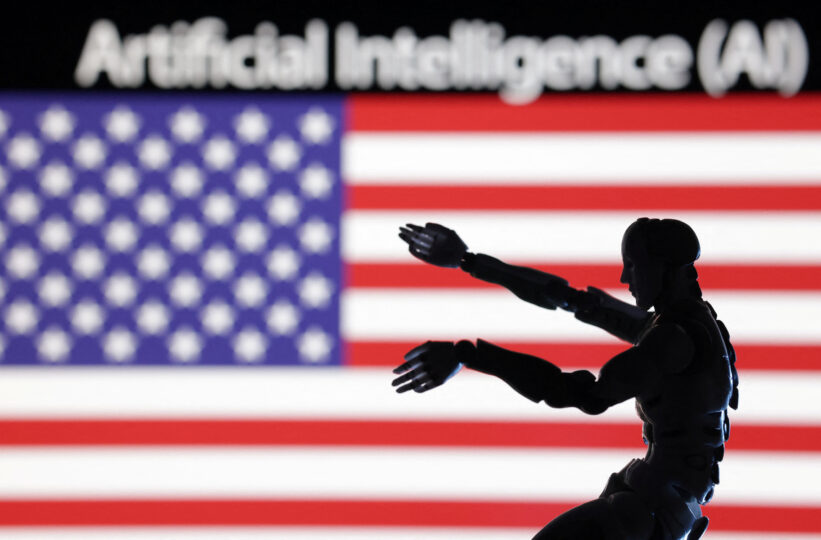Several leading US AI companies have expressed growing concern about America’s diminishing competitive advantage in the AI race. In recent submissions to the US government, these companies highlighted the increasing challenge posed by Chinese AI models, particularly DeepSeek R1, which have become more sophisticated and cost-effective. These submissions, made in March 2025, responded to the government’s AI Action Plan request and emphasize how China is closing the technological gap in the AI race.
China’s Rising AI Influence
The DeepSeek R1 model, supported by the Chinese state, has raised alarms among US developers. According to OpenAI, DeepSeek is a clear indicator of the narrowing technological gap between the US and China in the ongoing AI race. OpenAI describes DeepSeek as “state-subsidized, state-controlled, and freely available,” which raises significant concerns about its potential impact on global AI progress.
The company also compared DeepSeek to Huawei, warning that Chinese regulations could force DeepSeek to compromise US infrastructure or sensitive systems. Issues related to data privacy were also raised, with concerns that Chinese laws could compel DeepSeek to share user data with the government, giving China an edge in advancing its AI capabilities.
In addition to DeepSeek, China’s Baidu has introduced AI models such as Ernie X1 and Ernie 4.5, designed to compete with Western AI technologies. Baidu claims Ernie X1 matches DeepSeek R1 in performance but at half the price. Meanwhile, Ernie 4.5 is priced just 1% of OpenAI’s GPT-4.5, outperforming it in various benchmarks.
Pricing Pressure from DeepSeek
DeepSeek’s aggressive pricing strategy is causing a major disruption in the AI race. Bernstein Research reports that DeepSeek’s V3 and R1 models are priced 20-40 times lower than similar models from OpenAI. This price difference is putting significant pressure on US developers to adjust their business models to stay competitive in the AI race.
In addition, Baidu’s decision to open-source its models has contributed to the growing competition. As Baidu CEO Robin Li mentioned in February, “One thing we learned from DeepSeek is that open-sourcing the best models greatly helps adoption.” Baidu plans to open-source its Ernie 4.5 series by June 30, which could accelerate adoption and further challenge US AI companies.
AI Security and Economic Concerns for the US
The US companies also raised security and economic risks associated with China’s growing AI influence. OpenAI expressed concerns that Chinese regulations might compel DeepSeek to manipulate its models, leading to vulnerabilities in US infrastructure. The potential to create security risks within critical sectors is a key worry.
Anthropic highlighted the biosecurity risks posed by AI, disclosing that its Claude 3.7 Sonnet model demonstrated potential capabilities in biological weapon development. Anthropic also pointed out the risks from US export controls on AI chips. Nvidia’s H20 chips, although meeting US export restrictions, are still used in reinforcement learning, and Anthropic urged the government to tighten restrictions to prevent China from gaining an edge with these chips.
Google took a more cautious stance. While acknowledging the security risks, the company warned that over-regulation could harm US competitiveness by restricting opportunities for domestic cloud providers. Google suggested targeted export controls to protect national security without hindering business opportunities.
Keeping the US Competitive in AI
To maintain leadership in the AI race, the US companies called for increased government oversight and investment in AI infrastructure. Anthropic warned that by 2027, training a single advanced AI model could require up to five gigawatts of power, equivalent to a small city’s energy consumption. The company proposed a national target to build 50 gigawatts of AI-dedicated power capacity by 2027.
OpenAI framed the competition between the US and China as a battle between democratic and authoritarian AI models. They argue that fostering a free-market approach would drive innovation and ensure that the US retains its technological leadership in the AI race.
Google focused on practical solutions, including advocating for increased federal funding for AI research, improved government contracts, and streamlined export controls. The company also recommended more flexible procurement rules to speed up AI adoption by federal agencies.
Regulatory Recommendations for US AI
The US companies called for a unified federal approach to AI regulation. OpenAI proposed a framework managed by the Department of Commerce, warning that fragmented state-level regulations could push AI development overseas. The company also supported a tiered export control framework, allowing US-developed AI to flow more freely to democratic countries, while restricting it in authoritarian states.
Anthropic advocated for stricter export controls on AI hardware and training data, stressing that even minor advances in model performance could give China a competitive edge in the AI race. Google, on the other hand, emphasized the importance of protecting intellectual property rights, especially regarding copyright rules, as restrictive laws could disadvantage US AI firms.
All three companies underscored the need for the government to adopt AI faster. OpenAI recommended removing existing barriers to testing and procurement, while Anthropic backed a more streamlined process for government procurement. Google stressed the importance of improving interoperability within government cloud infrastructure.
















